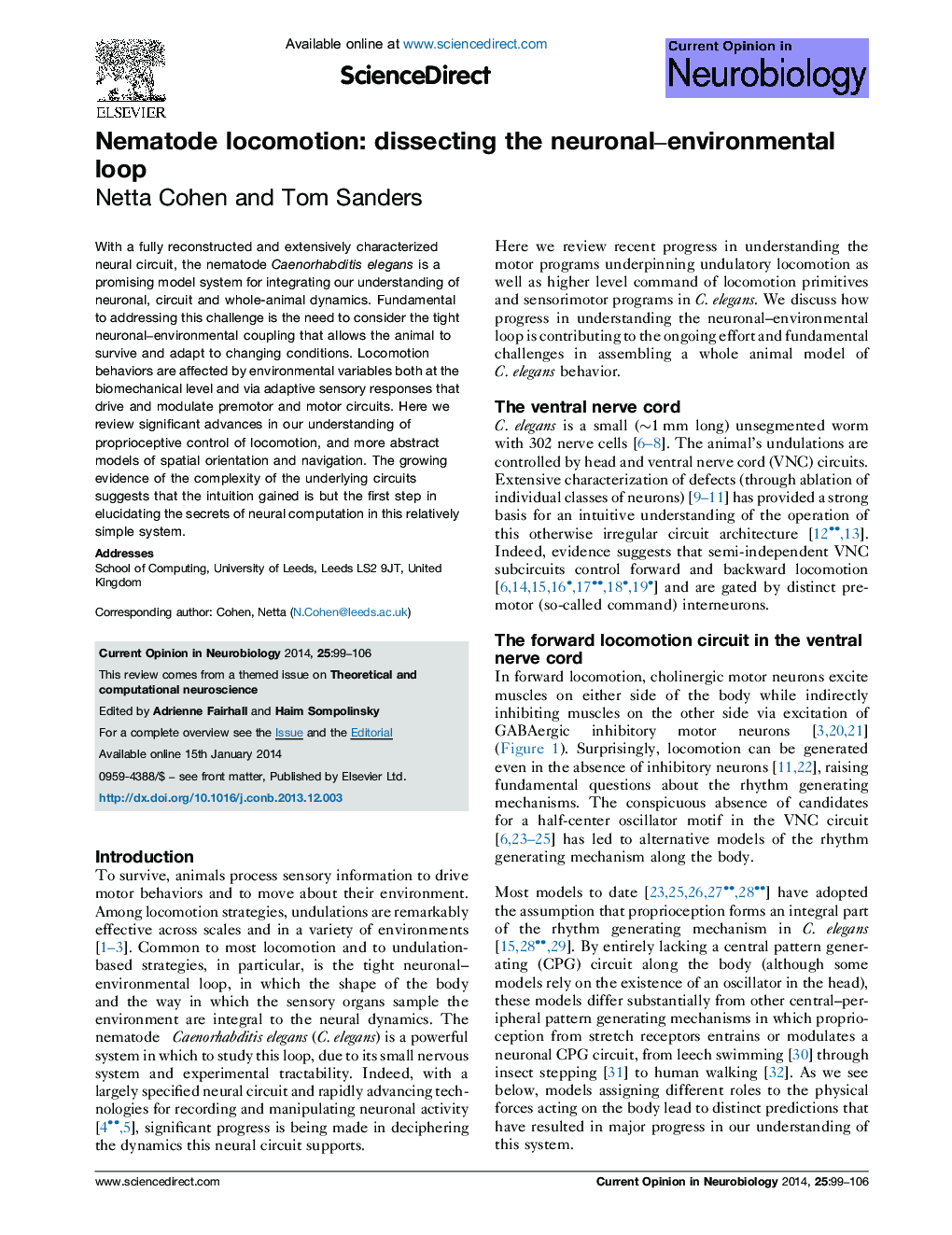| کد مقاله | کد نشریه | سال انتشار | مقاله انگلیسی | نسخه تمام متن |
|---|---|---|---|---|
| 6266546 | 1614524 | 2014 | 8 صفحه PDF | دانلود رایگان |

- Caenorhabditis elegans is an excellent system for studying the interplay between neuronal dynamics and the external environment.
- In forward locomotion, a peripheral pattern generating mechanism relies on proprioceptive control to generate and propagate undulations.
- Proprioception mediates smooth modulation of the locomotion gait, allowing for instant adaptation to variable physical environments.
- High level complex locomotion behaviors that are controlled by overlaid circuits are modulated by adaptive sensory responses.
- Integrating models of spatial orientation and motor control will lead to a better understanding of computations performed along the sensorimotor pathway.
With a fully reconstructed and extensively characterized neural circuit, the nematode Caenorhabditis elegans is a promising model system for integrating our understanding of neuronal, circuit and whole-animal dynamics. Fundamental to addressing this challenge is the need to consider the tight neuronal-environmental coupling that allows the animal to survive and adapt to changing conditions. Locomotion behaviors are affected by environmental variables both at the biomechanical level and via adaptive sensory responses that drive and modulate premotor and motor circuits. Here we review significant advances in our understanding of proprioceptive control of locomotion, and more abstract models of spatial orientation and navigation. The growing evidence of the complexity of the underlying circuits suggests that the intuition gained is but the first step in elucidating the secrets of neural computation in this relatively simple system.
Journal: Current Opinion in Neurobiology - Volume 25, April 2014, Pages 99-106